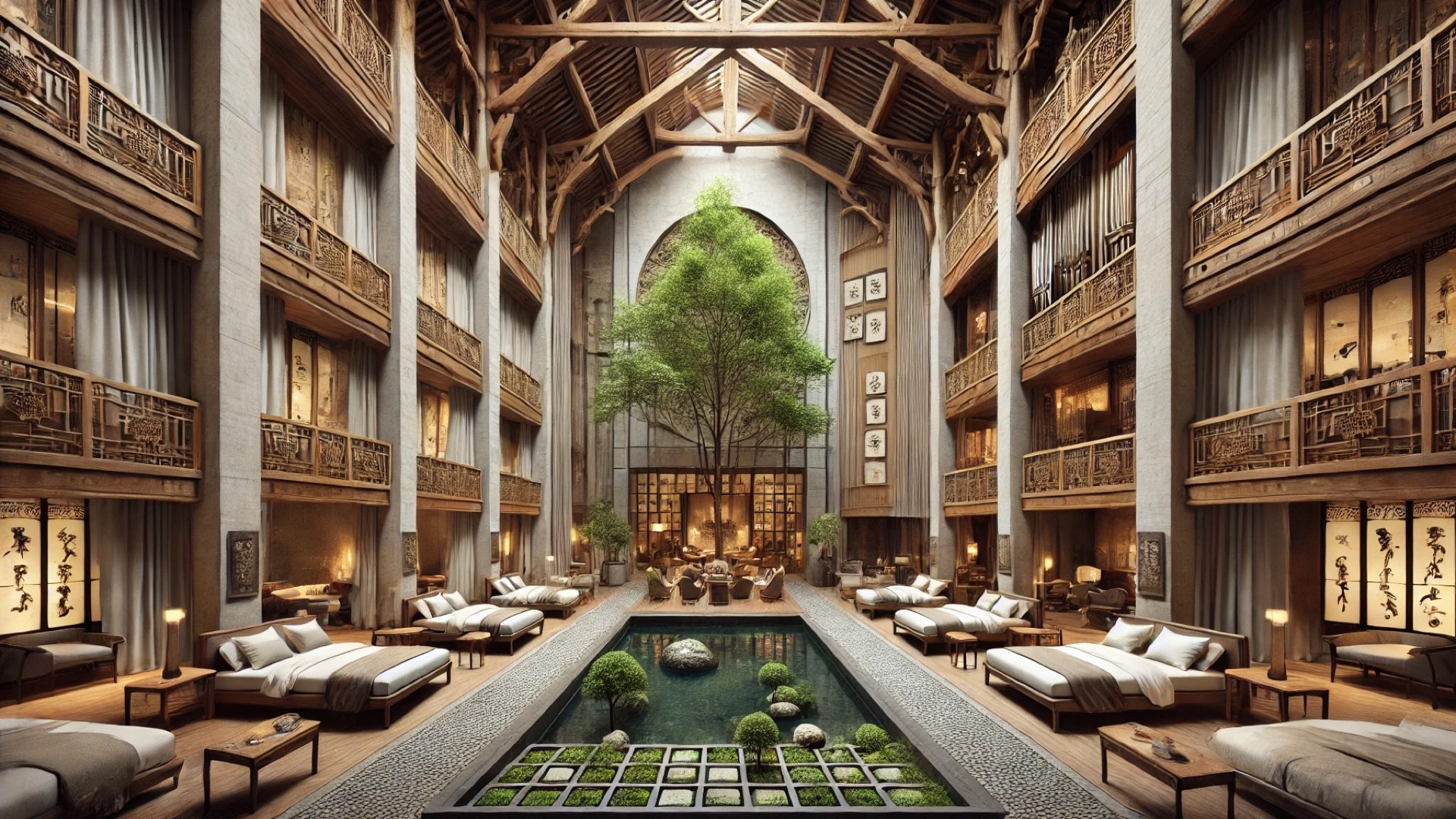
Transforming Cinematic Heritage into Modern Hospitality
In a delightful blend of history and contemporary design, B.L.U.E. Architecture Studio has unveiled the Jiangnan House, a stunning hotel conversion of a historic cinema in Yangzhou's Guangling district. This transformation is not just about converting a building; it’s a thoughtful homage to the cultural heritage of Yangzhou, seamlessly marrying aged architectural elements with modern hospitality needs.
Preserving the Essence of Yangzhou's Architectural Heritage
The original cinema structure, which was once the Subei Cinema, stands as a relic of the past, and the design team has been meticulous in preserving its rich timber framework. The lobby of the Jiangnan House is designed within the former cinema’s auditorium, ingeniously maintaining the lofty ambiance that the original structure provided. This renovation is part of a broader initiative known as the Guangling Ancient City urban renewal program, aiming to rejuvenate the area while respecting its historic fabric.
Innovative Design Meets Traditional Craft
The design integrates modern materials like recycled bricks, bamboo-molded concrete, and hand-carved stone tiles. Each guest room, positioned within the serene confines of the courtyard layout, has been constructed to echo the forms of traditional pavilions found in classical Yangzhou gardens. This aesthetic approach not only beautifies the space but ensures the character of the original structures is retained. Distinctive elements such as aged elm wood and textured plaster evoke the craftsmanship of a bygone era, while contemporary comforts like air conditioning and ensuites ensure luxurious living standards.
Natural Elements Enhance Guest Experience
The integration of a central tree pond and pathways lined with vertical greenery brings a slice of traditional Yangzhou courtyard gardens into this modern setting. These spaces foster a tranquil environment and create a sensory experience for guests, inviting them to connect with the surrounding nature while whispering tales of the site’s storied past. Local artistry, recognizable in woodcarving prints depicting classic cinema scenes, deepens this connection, blending the old with the new.
Looking Ahead: The Future of Adaptive Reuse in Architecture
The Jiangnan House exemplifies a prime example of adaptive reuse, a growing trend in architecture that preserves heritage while accommodating modern needs. As property owners increasingly prioritize sustainability and the preservation of historical significance, projects like Jiangnan House illuminate a path forward. This endeavor not only revitalizes Yangzhou’s urban landscape, but it also sets a benchmark for similar initiatives across the globe where architectural integrity and contemporary design can coexist beautifully.
With 40 uniquely designed guest rooms, the hotel not only caters to the high-end traveler seeking luxury but also to those desiring a rich cultural experience rooted in authentic craftsmanship. It celebrates and honors the artistry of both past and present, ensuring that the stories of these spaces continue to be told and cherished.
Whether you’re a lover of architecture, a seasoned traveler, or someone passionate about preserving heritage, keeping an eye on projects like the Jiangnan House will enrich your understanding and appreciation of adaptive reuse in the world of contemporary design.
 Add Row
Add Row  Add
Add 




Write A Comment